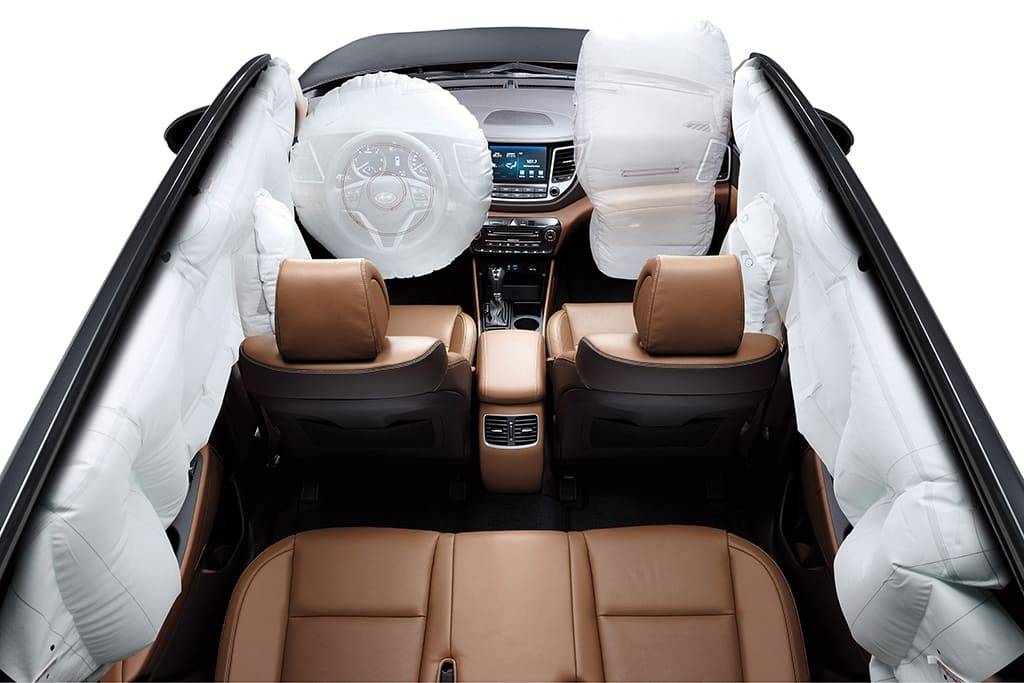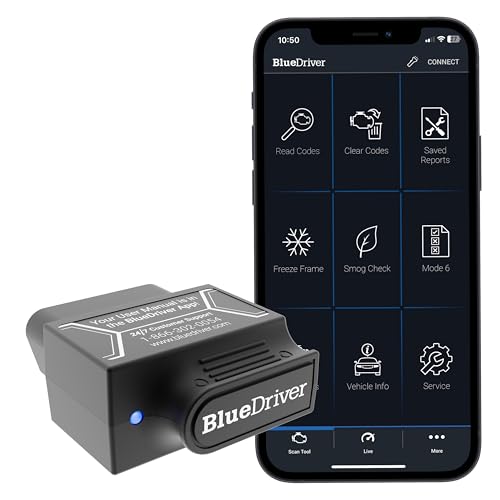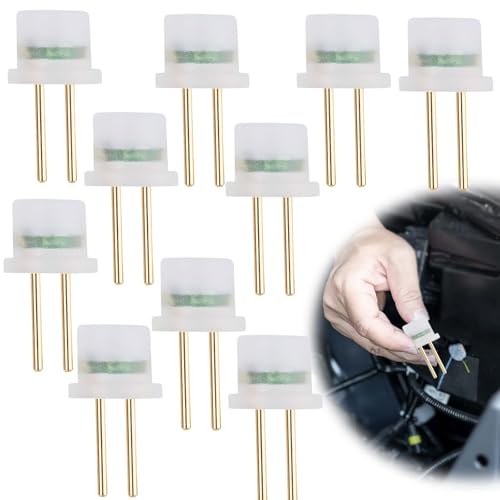That sudden, unfamiliar light on your dashboard can be unsettling. You see the letters “SRS,” and your mind immediately races with questions about safety, potential problems, and expensive repairs. What does that light mean, and what should you do about it?
SRS stands for Supplemental Restraint System. It is the official name for your car’s critical safety network that controls the airbags and seatbelt pretensioners, and an illuminated light indicates a fault within this system.
This guide, updated for 2025, cuts through the confusion. We’ve analyzed the technical data to explain exactly what the SRS light means, the common reasons it comes on, and the precise steps you need to take to ensure your safety. We will unpack the dangers of ignoring this warning and provide a clear, actionable plan to get it resolved.
What is the SRS Light on Your Car? (And What Does SRS Mean?)
SRS stands for Supplemental Restraint System. It is a critical safety system in your car that controls the airbags and seatbelt pretensioners to protect occupants during a collision.

Did you know SRS stands for Supplemental Restraint System? It’s the official name for your car’s critical airbag and seatbelt safety network. The term “supplemental” is key—it means the system works in addition to your seatbelts, which are your primary form of protection. When you see the SRS light, it’s your vehicle’s way of telling you there’s a problem somewhere in this network.
This system is also known by other names, all referring to the same core function:
- Supplemental Restraint System (SRS): The most common and official term.
- Secondary Restraint System: Another technical name for the system.
- Passive Restraint System: This name highlights that it works automatically without any action from the driver or passengers.
When you start your car, the SRS light should turn on for a few seconds for a self-check and then turn off. If it stays on, it’s a clear signal that something is wrong.
Why Is My SRS Light On? 7 Common Causes
Common reasons for an illuminated SRS light include a faulty Airbag Control Module, malfunctioning sensors, a damaged clock spring in the steering wheel, wiring issues, or a dead SRS backup battery.
When the SRS warning light stays on, the system has detected a fault and has likely disabled itself as a precaution. This means your airbags may not deploy in an accident. Does your car have higher mileage? A damaged clock spring (Cause #3) is a surprisingly common issue in older vehicles. Here are the most frequent culprits a mechanic will investigate.
- Defective Airbag Control Module (ACM): The central computer or “brain” of the SRS has malfunctioned.
- Faulty Crash or Occupant Sensors: The sensors that detect an impact or the presence of a passenger are not working correctly.
- Damaged Clock Spring: A common wear-and-tear item in the steering column that maintains the electrical connection to the driver’s airbag.
- Wiring or Connection Issues: A corroded plug, loose connector, or damaged wire anywhere in the complex SRS network.
- Malfunctioning Seatbelt Latch: The system can be triggered by a faulty seatbelt buckle that isn’t latching or communicating properly.
- Depleted SRS Backup Battery: The SRS has its own small power source to ensure it works even if the main car battery is disconnected in a crash. This battery can fail over time.
- Previous Minor Accident: Sometimes a minor collision can trigger a fault code in the system, even if the airbags didn’t deploy.
Defective Airbag Control Module (ACM) or Sensors
A malfunction in the system’s central computer (ACM) or any of its critical crash and occupancy sensors will trigger the SRS light. Think of the ACM as the central computer for your entire safety system. It constantly receives information from sensors placed around the vehicle. These include crash sensors that measure impact severity and occupancy sensors in the passenger seat that determine if someone is sitting there. If the ACM fails or a sensor sends faulty data, the system flags an error and turns on the warning light. This ACM is also the “black box” that records critical data during a collision, which can be invaluable for accident reconstruction.
Damaged Clock Spring or Wiring Issues
A broken clock spring in the steering wheel is a common failure point that disrupts the driver’s airbag connection, causing the SRS light to come on. This component is a coiled ribbon of wires that allows your steering wheel to turn while maintaining an electrical connection for the airbag, horn, and other steering wheel controls. Over time, it can wear out and break.
- Clock Spring Failure: This is a very common issue on older cars or those with high mileage. It directly impacts the driver’s side airbag circuit.
- Wiring and Corrosion: The SRS system has wiring running throughout the car. Any damage to these wires or corrosion on the plugs and connectors can interrupt the signal and trigger a fault. Pro Tip: “Moisture exposure can lead to corrosion on SRS wiring, a hidden issue a mechanic will check for.”
The Dangers: Can You Drive with the SRS Light On?
No, it is not safe to drive with the SRS light on. The light indicates a fault in the safety system, meaning your airbags and seatbelt pretensioners may not deploy in a crash.
Is it worth risking your safety in a collision for the convenience of not getting it checked? The answer is a definitive no. While the car will still operate mechanically, its most important passive safety features are compromised.
WARNING: An illuminated SRS light means your vehicle’s airbag system is offline. In the event of an accident, the airbags and seatbelt pretensioners will likely fail to deploy, significantly increasing the risk of serious injury or fatality.
Here are the specific dangers you face by ignoring the light:
- Airbag Failure: This is the primary risk. The system that is designed to cushion you during an impact will not function.
- Failed Safety Inspection: In most regions, a vehicle with an active SRS or airbag warning light on the dashboard will automatically fail its mandatory safety inspection.
- Potential Insurance Issues: If you are in an accident and the vehicle’s “black box” data shows the SRS light was ignored, an insurance company could potentially argue that you were negligent, which might affect your coverage for medical expenses.
What to Do When Your SRS Light Comes On: A 3-Step Guide
If your SRS light is on, do not ignore it. The first and most important step is to have the vehicle inspected by a qualified mechanic who can diagnose the specific fault code.
Seeing the SRS light can be stressful, but the solution is straightforward. Do not attempt complex DIY repairs on this system, as it involves sensitive electronics and potentially explosive components. Follow these safe and effective steps.
- Check for Simple Issues First: Perform a couple of basic checks that might, in rare cases, resolve a temporary glitch.
- Schedule a Professional Diagnosis Immediately: This is the most crucial step. A mechanic has the tools to find the exact problem.
- Understand the Repair Process: Once diagnosed, learn about the necessary repair to make an informed decision.
Step 1: Check for Simple Issues (But Don’t Expect a Fix)
You can try turning the ignition on and off several times, as this can sometimes reset a temporary sensor glitch. While unlikely to solve the root problem, these quick checks can occasionally help identify a minor, temporary fault before you head to the mechanic.
- Ignition Cycle Reset: Turn your car’s ignition to the “ON” position (without starting the engine), wait for the SRS light to turn off, then immediately turn the ignition “OFF.” Repeat this cycle 3-4 times. If the light was triggered by a temporary sensor malfunction, this might clear it.
- Check Seatbelt Latches: Ensure all seatbelts are fully latched and unlatched. A sticky or malfunctioning buckle can sometimes send an error signal.
If the light remains on after these checks, you have a persistent fault that requires professional attention.
Step 2: Schedule a Professional Diagnosis Immediately
A mechanic uses a specialized tool to read the specific trouble code from the SRS computer, which pinpoints the exact component that is malfunctioning.
The only way to know for sure what does srs mean on car for your specific situation is to have the system scanned. A standard OBD-II scanner often cannot read SRS codes. Mechanics use specialized diagnostic tools that communicate directly with the Airbag Control Module to read trouble codes. Each code corresponds to a specific fault in the system, such as “High Resistance in Driver’s Airbag Circuit” or “Faulty Passenger Occupancy Sensor.” This takes the guesswork out and allows for an accurate repair. Pro Tip: “Ask the technician for the specific SRS trouble code they find. This can help you understand the exact nature of the problem.”

Step 3: Understand the Repair Process
The cost to fix an SRS issue depends entirely on the faulty component, ranging from a simple sensor replacement to a more complex Airbag Control Module repair.
Once the mechanic has the trouble code, they can provide you with an accurate estimate for the repair. The cost and complexity can vary dramatically. Stating that costs vary widely is the most honest approach; a proper diagnosis is the only way to get an accurate estimate for your vehicle.
| Component | Common Issue | Repair Complexity |
|---|---|---|
| Crash/Occupancy Sensor | Sensor Failure | Low to Moderate |
| Clock Spring | Internal Wire Breakage | Moderate |
| Wiring/Connector | Corrosion or Damage | Varies Widely |
| Airbag Control Module | Internal Failure / “Bricked” | High |
How Your Car’s SRS System Works
The SRS works via a network of sensors that detect a collision, a central computer (ACU) that analyzes the data, and an inflator unit that rapidly fills the airbags with gas upon receiving a deployment signal.
The Supplemental Restraint System is an engineering marvel that operates in milliseconds. Understanding its process reveals why it’s such a critical safety feature. Quick Fact: “The ‘black box’ in your car’s SRS system ensures it can still function even if the main battery is disconnected in a crash, thanks to its own small backup battery!”
- Sensors Detect an Impact: When a collision occurs, acceleration and crash sensors instantly measure the force and direction of the impact. This data is immediately sent to the control unit.
- Control Unit Processes Data: The Airbag Control Unit (ACU) analyzes the sensor data in a fraction of a second to determine if the crash is severe enough to warrant deployment. It’s programmed not to deploy in low-speed impacts or fender-benders.
- Deployment Signal is Sent: If the crash meets the threshold, the ACU sends an electrical signal. This signal triggers a chemical reaction in the airbag’s inflator, which produces a large volume of harmless nitrogen gas. This entire process inflates the airbag in less than 1/20th of a second, just in time to cushion the occupant. Simultaneously, a signal is often sent to the seatbelt pretensioners to tighten the belts.
For those who prefer a hands-on approach to diagnostics, having a reliable OBD2 scanner that can read SRS codes is invaluable for pinpointing the exact issue before heading to the mechanic.
FAQs About a Car’s SRS System
Here are direct answers to the most common questions people ask about what does srs mean on car.
What does SRS mean on a Toyota or Honda car?
SRS means the same thing on all modern cars, including Toyota and Honda. It stands for Supplemental Restraint System, which is the airbag and seatbelt safety system. The acronym and the warning light’s function are universal across virtually all vehicle manufacturers.
How do I reset the SRS light myself?
You cannot properly reset the SRS light without fixing the underlying fault. A mechanic must repair the problem and then use a specialized tool to clear the error code from the system’s computer. Warning: Simply clearing the code without addressing the mechanical or electrical issue is extremely dangerous. The fault still exists, your airbags will not work, and the light will almost certainly come back on.
Will an SRS light cause my car to fail inspection?
Yes, in most regions, an illuminated SRS or airbag warning light will cause a vehicle to automatically fail its safety inspection. This is because the light indicates that a critical, federally mandated safety system is not functioning correctly, making the vehicle unsafe for the road.
Can a dead car battery cause the SRS light to come on?
Yes, a low or dead main car battery can cause voltage issues that trigger the SRS light. Additionally, the SRS system has its own small backup battery that can fail over time and cause the light to illuminate. If the light appeared after a jump-start or battery replacement, it might be a temporary glitch. However, if it persists, it could be the system’s internal backup battery that has failed.
Final Summary: Your SRS Light is a Critical Safety Warning
The SRS light on your dashboard is far more than a minor annoyance; it is a direct warning that your car’s primary passive safety system is compromised. Understanding what does srs mean on car—the Supplemental Restraint System—is the first step toward taking the correct action. Ignoring it means accepting the risk that your airbags will fail when you need them most.
Don’t delay—prioritize your safety by scheduling a diagnostic check with a trusted mechanic today. Remember these key takeaways:
- SRS stands for Supplemental Restraint System, your car’s airbag and seatbelt pretensioner network.
- It is NOT safe to drive with the light on. Your airbags will likely not deploy in a crash.
- Professional diagnosis is required. A specialized tool is needed to read the specific fault code and identify the problem.
Last update on 2025-10-21 / Affiliate links / Images from Amazon Product Advertising API













